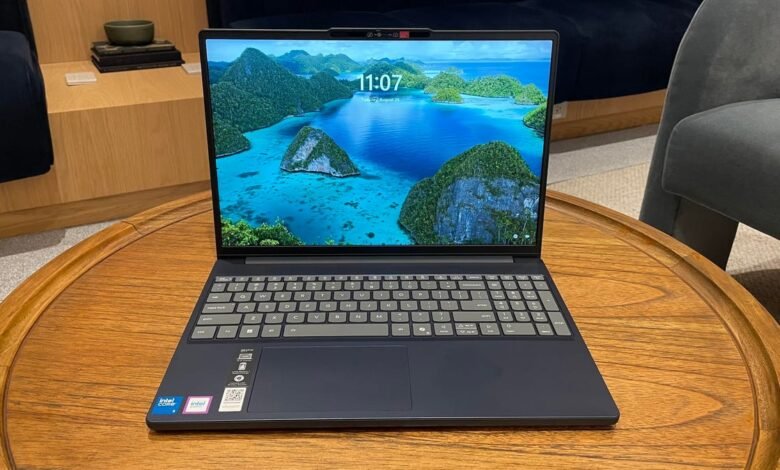2025 RAM Guide: How Much You “Really” Need for Windows & Mac

▼ Summary
– RAM is a computer’s short-term memory that temporarily stores files for quick access, improving performance.
– 16GB of RAM has become the standard baseline for Windows laptops to handle modern workloads smoothly.
– MacBooks are more optimized, so 8GB of RAM can suffice for daily use, while Chromebooks perform well with 8GB or less due to their lightweight OS.
– Heavy users like gamers or creative professionals should consider 32GB or more RAM for demanding tasks like video editing or gaming.
– DDR5 is the latest standard RAM technology that improves data transfer speed, with LPDDR5X being an energy-efficient version for mobile devices.
Choosing the right amount of RAM for your computer in 2025 can feel overwhelming, but understanding your specific needs makes the decision much clearer. Random Access Memory (RAM) acts as your computer’s short-term memory, temporarily holding data for quick retrieval so your system runs faster and more responsively. While processor speed and storage capacity matter, having adequate RAM is essential for multitasking, running demanding applications, and ensuring a smooth overall experience, whether you use Windows, macOS, or ChromeOS.
Many shoppers wonder whether to invest in a laptop with 32GB of LPDDR5X RAM or if 16GB will suffice. The answer really depends on your operating system and daily tasks. For Windows users, 16GB of RAM has become the practical baseline for new laptops. Although Microsoft lists 4GB as the minimum for Windows 11, modern workflows, like having dozens of browser tabs open, background applications running, and possibly using generative AI tools, make 16GB the sensible choice for a responsive, future-proof machine. While 8GB might handle light duties such as email and web browsing, it can quickly become a bottleneck for anyone juggling multiple programs.
Apple’s MacBooks operate a bit differently thanks to their highly optimized hardware and software integration. An 8GB MacBook often delivers better real-world performance than a standard Windows laptop with the same memory, making it suitable for everyday use. However, Apple has started making 16GB the entry point with newer models like the MacBook Air M4. For more intensive work, MacBook Pro and Pro Max configurations offer 24GB, 36GB, or higher, positioning them among the most powerful, and expensive, laptops available.
Chromebooks represent a third popular category, prized for their affordability and lightweight ChromeOS. These devices typically manage well with 8GB or even 4GB of RAM, since the operating system is streamlined for browser-based tasks and Google Suite applications. The trade-off is limited access to specialized software available on Windows or macOS, but for users focused on web apps and cloud services, a Chromebook offers snappy performance without a high price tag.
It’s true that more RAM generally leads to better performance, but there’s a point of diminishing returns. Paying for memory you rarely use is like buying a large house and only occupying a few rooms, it’s not a wise investment. Before purchasing, think carefully about what you’ll actually do with your laptop. This helps set realistic expectations and ensures you get the right amount of RAM without overspending.
You might also encounter terms like DDR5 or LPDDR5X while comparing specs. DDR stands for “double data rate,” a technology that boosts how quickly data moves between RAM and other components like the processor. DDR5 is the current mainstream standard, offering faster speeds than previous generations. LPDDR5X is a low-power variant designed for mobile devices, improving battery life without sacrificing performance. Although newer standards like LPDDR6 have been announced, widespread adoption in consumer laptops is still on the horizon.
So when should you consider upgrading beyond 16GB? Gamers and creative professionals will benefit from 32GB of RAM, which helps demanding games and video-editing applications run more smoothly. If your work involves editing 8K video, running virtual machines, or using several heavy applications at once, you might even look at 48GB or 64GB configurations. High-performance laptops like the M4 MacBook Pro or Dell Premium 16 are built to handle these extreme workloads.
Having tested and written about technology for nearly a decade, I’ve used laptops in all kinds of environments, from corporate offices to remote workspaces. Being highly dependent on my computer for daily tasks, I’ve become very selective about performance and reliability. I’ve tried nearly every type of laptop on the market and learned which features deliver value and which are unnecessary. The guidance here isn’t meant as a rigid set of rules, but as a foundation to help you identify what will work best for your individual needs.
(Source: ZDNET)





